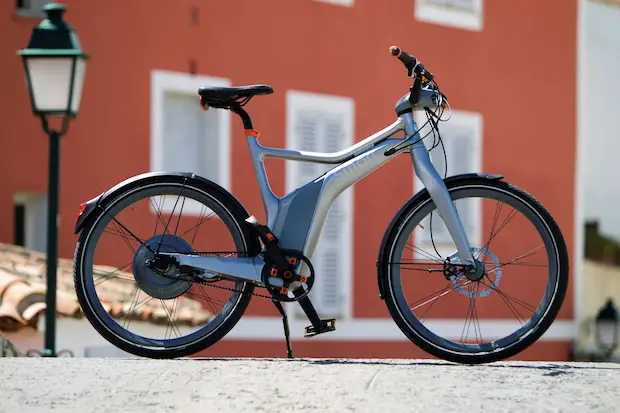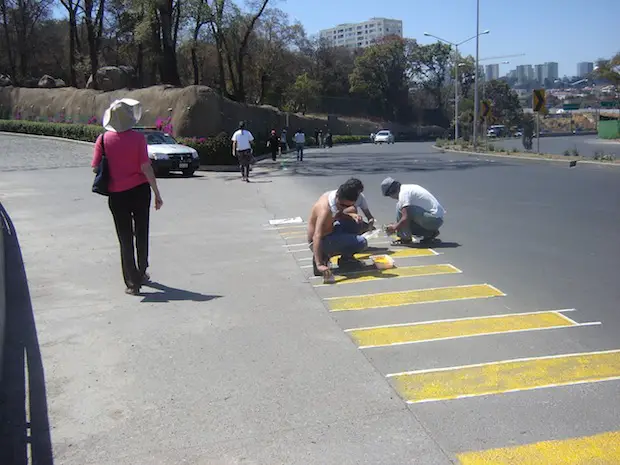The Whole Cost of Driving, or Why You’re Probably Paying too Much for the Subway
If you drive a car what do you typically pay for? There’s gas, insurance, the occasional trip to the mechanic, tolls sometimes, maybe some lump sum for parking if you don’t work in the suburbs. It adds up to a lot, in fact it’s actually a lot more than you’d be paying if you lived in the city and simply took the subway or rode a bike to work. (Luckily for those of us in the US, the American Public Transportation Association has a little online calculator that can tell you exactly how much money you’re throwing away by hopping into your Camry every day.) Sure, urban denizens might shell out more in rent and groceries (Brooklyn recently became the 2nd most expensive city in America but has a median household income of $32,000—what?) but we save a boatload on transportation costs even though the ever climbing fare schedule is actually beginning to price out the neediest communities from transit.
It balances itself out, right? Car owners pay a couple thousand extra dollars every year in the form of additional expenses while city dwellers pay the higher living costs associated with having access to reliable public transportation. Drivers in major metropolitan corridors have to pay bridge, tunnel, and highway tolls while people closer to the city center have to pay fares for buses and subways. Equals peequals.
We are not equals peequals.
Public transit is a heavily subsidized industry and the related numbers are easily gleaned from budget outlays on a state-by-state basis. (Here’s a study that compares the subsidies across modal splits in NYC [PDF] and interestingly includes ferries, the oft-forgot way to get to work.) For subways, New York subsidizes about a quarter of each passengers’ ride and for buses it’s about a 70% subsidy. When you get up to a commuter rail service like the Long Island Railroad the total subsidy is 88% for the average ride which is variable based on distance, unlike the other two modes. Balancing out the subsidies is simple for transit administrations: you simply hike the fares. Like it or not, a portion of your Federal, state, and city tax dollars goes towards funding transit even if you never ride it, a concept that many lawmakers and constituents in suburban and exurban communities are definitely not cool with.
So if you’re an everyday driver you’re probably asking yourself, Where’s my subsidy? Why isn’t the government paying for 30% of my gas or 50% of my tolls or 70% of my Big Gulps?
Brace yourselves, drivers: they already kinda sort of do. You may consider the amount you shell out every month for driving to be exorbitant but the costs of driving are so artificially depressed that you are receiving an effective subsidy simply because there is no political will to hike the Federal gas tax like we hike transit fares.
It would stand to reason that if fare hikes are the best way to balance the transit subsidies (just kidding, privatizing transit is the best way to do that!) then increasing the cost of driving by, say, increasing the Federal gas tax by including the social costs of driving (congestion, emissions, public safety, depreciation of public infrastructure) would be the best way to balance out the cost of driving. We haven’t had a Federal gas tax increase in the United States since 1993. Just to put that in perspective, the cost of a subway ride in New York and Chicago has increased by 44% (with a slated increase that will drive it to 50%) and in Boston it’s gone up by 57%—even adding a nickel to the current Federal gasoline excise tax (a relatively paltry 22% increase to $0.234/gallon) would add billions in revenue (PDF) to the USDOT budget and would go a long way towards funding the true cost of driving.
How likely are we to see a Federal gas tax increase in the next decade? Not very. There isn’t much favor for state-level gas tax increases either with only Iowa coming close to adding $0.05 to their state excise tax which hasn’t been changed since 1989. Gov. Deval Patrick of Massachusetts also attempted to raise state gas taxes by a more robust $0.19, a hike that would have raised ~$600 per year million for the state—he backed off his proposal after realizing there was almost no political will to pass such a measure.
On the other hand, transit agencies are almost sure to increase fares that outpace inflation out of sheer necessity, and when you price out constituents from transit there’s not much in the way of recourse; price out drivers and there’s a high likelihood of alternative transportation modes.
Theodore Brown is a transportation consultant based in Brooklyn, New York.
Photo: dandelion89


